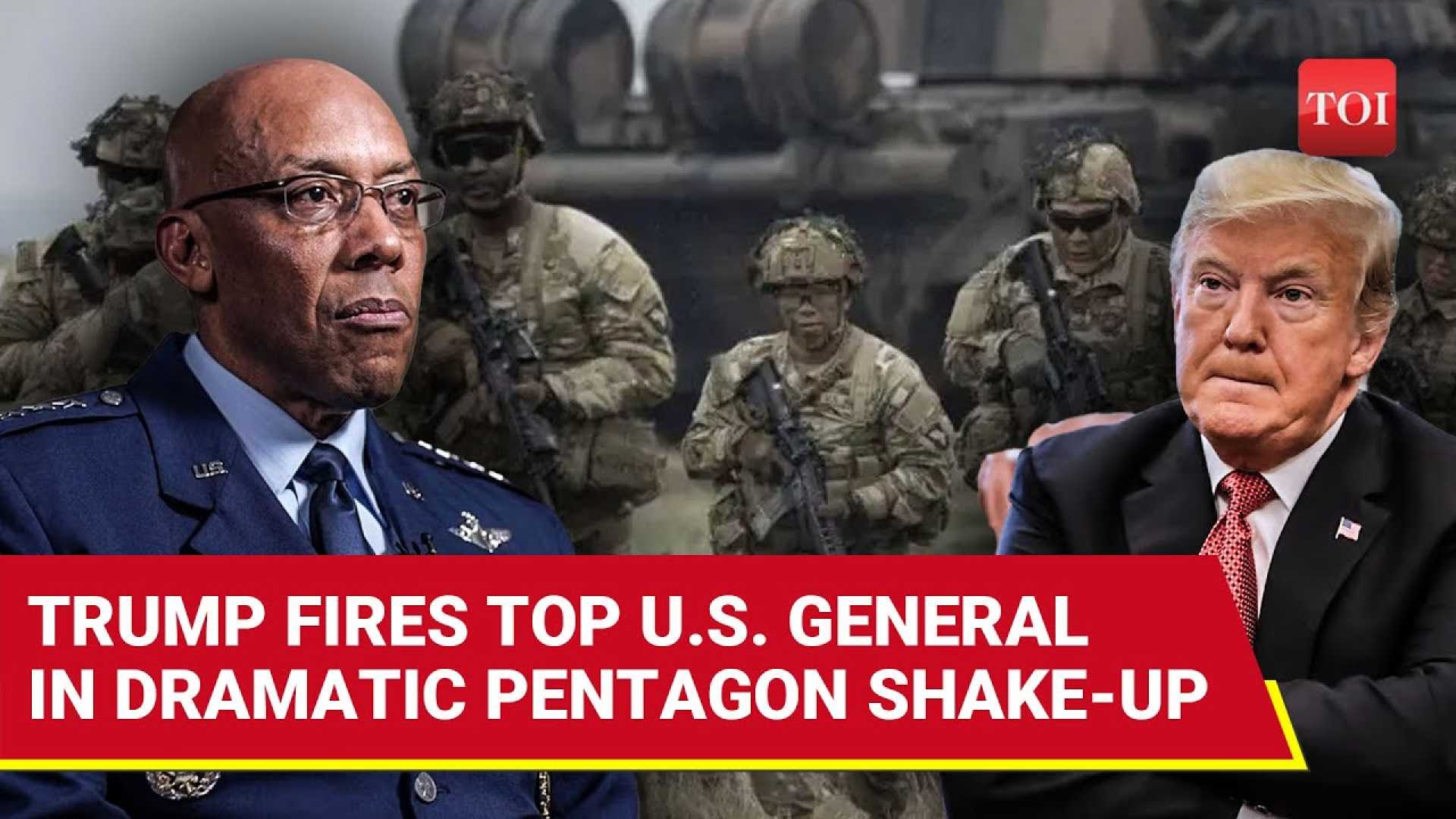Politics
Trump Purges Top Military Leaders in Bold Pentagon Shakeup

WASHINGTON, D.C. — In a significant shift for the U.S. military, President Donald Trump has dismissed several high-ranking military officers, including the chairman of the Joint Chiefs of Staff, General Charles ‘CQ’ Brown Jr., and Chief of Naval Operations, Admiral Lisa Franchetti. This decisive action, taken on February 23, 2025, appears aimed at reshaping the leadership of the Pentagon to ensure loyalty and alignment with his administration’s directives.
The firings come amid heightened scrutiny and a turbulent political climate. Defense Secretary Pete Hegseth announced he would seek nominations to replace military legal advisers across the Air Force, Army, and Navy, further indicating a broad reorganization aimed at consolidating power within the Department of Defense. According to sources, none of the officials were reported to have been terminated for cause.
Trump’s objective seems clear: to install leaders who prioritize allegiance over military advice. This latest move echoes his earlier efforts to control military narratives and directives, following a past fraught with tensions during his first term with senior officers who resisted his strategic aims. In a social media statement, Trump also proclaimed retired Air Force Lieutenant General Dan Caine as his nominee to succeed General Brown, pending Senate confirmation.
Historically, Trump’s relationships with military leaders have been rocky. He began his first term surrounded by generals whom he later distanced himself from due to disagreements over critical military decisions, including the handling of U.S. troops in Afghanistan and Syria. Retired General John Kelly, former Secretary of Defense James Mattis, and National Security Adviser H.R. McMaster all found themselves at odds with Trump, leading to their eventual departures.
Former Defense Secretary Jim Mattis, who resigned in protest over Trump’s decision to withdraw troops from Syria, has recently voiced concerns about the current political environment. He stated, “Donald Trump is the first president in my lifetime who does not try to unite the American people—does not even pretend to try.” Mattis’s remarks underscore the division that has often characterized Trump’s leadership style.
Trump’s reforms also come alongside significant budget cuts proposed for the Pentagon, which is expected to eliminate approximately $50 billion annually over the next five years. This aggressive strategy raises alarms among lawmakers regarding the potential impacts on military effectiveness and the morale of service members. Some congressional aides have expressed frustration, indicating that other concerns may now be overlooked as the administration pushes through its priorities.
Despite the upheaval, Trump is asserting his constitutional prerogative as Commander in Chief. As noted by retired General George Casey, “It’s purely, it is significantly within the president’s prerogative. That’s his prerogative. He is the commander in chief of the armed forces.” However, the implications of such a stark departure from established military leadership norms remain to be seen.
Members of Congress, including Senator Jack Reed, have condemned the firings, labeling them as unjustified and politically motivated. Reed stated, “These men and women were superb professionals. They were committed to their oath to defend the Constitution.” He warned that such actions threaten the nonpartisan nature of the U.S. military, crucial for maintaining its effectiveness in safeguarding the nation.
As the Pentagon braces for further changes, the full effects of Trump’s latest shakeup may ripple through military operations and morale, challenging the military’s longstanding traditions of neutrality and professionalism in pursuit of loyalty to the administration.












